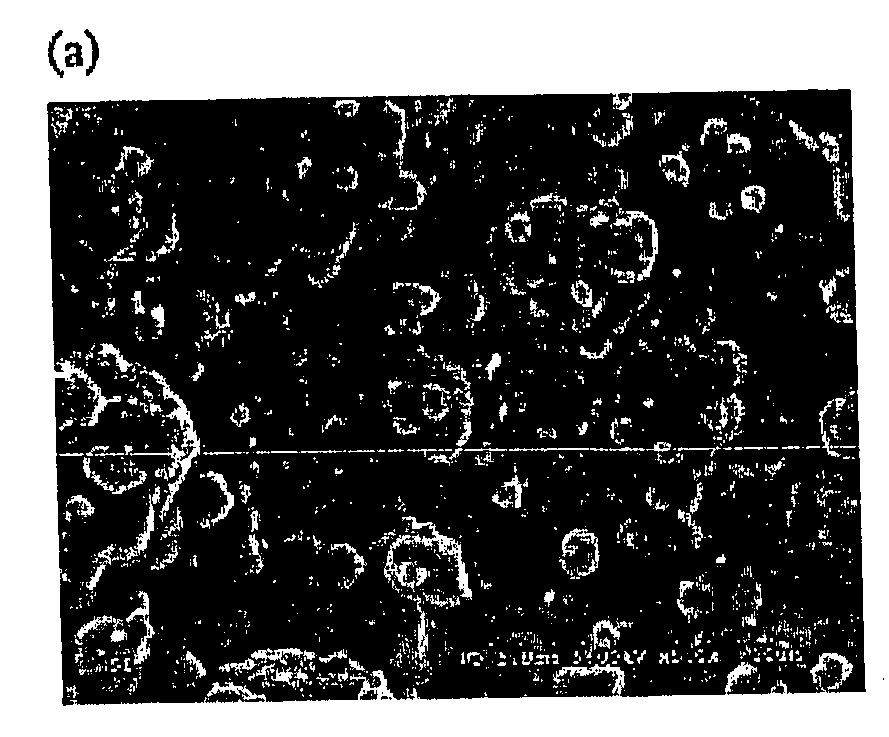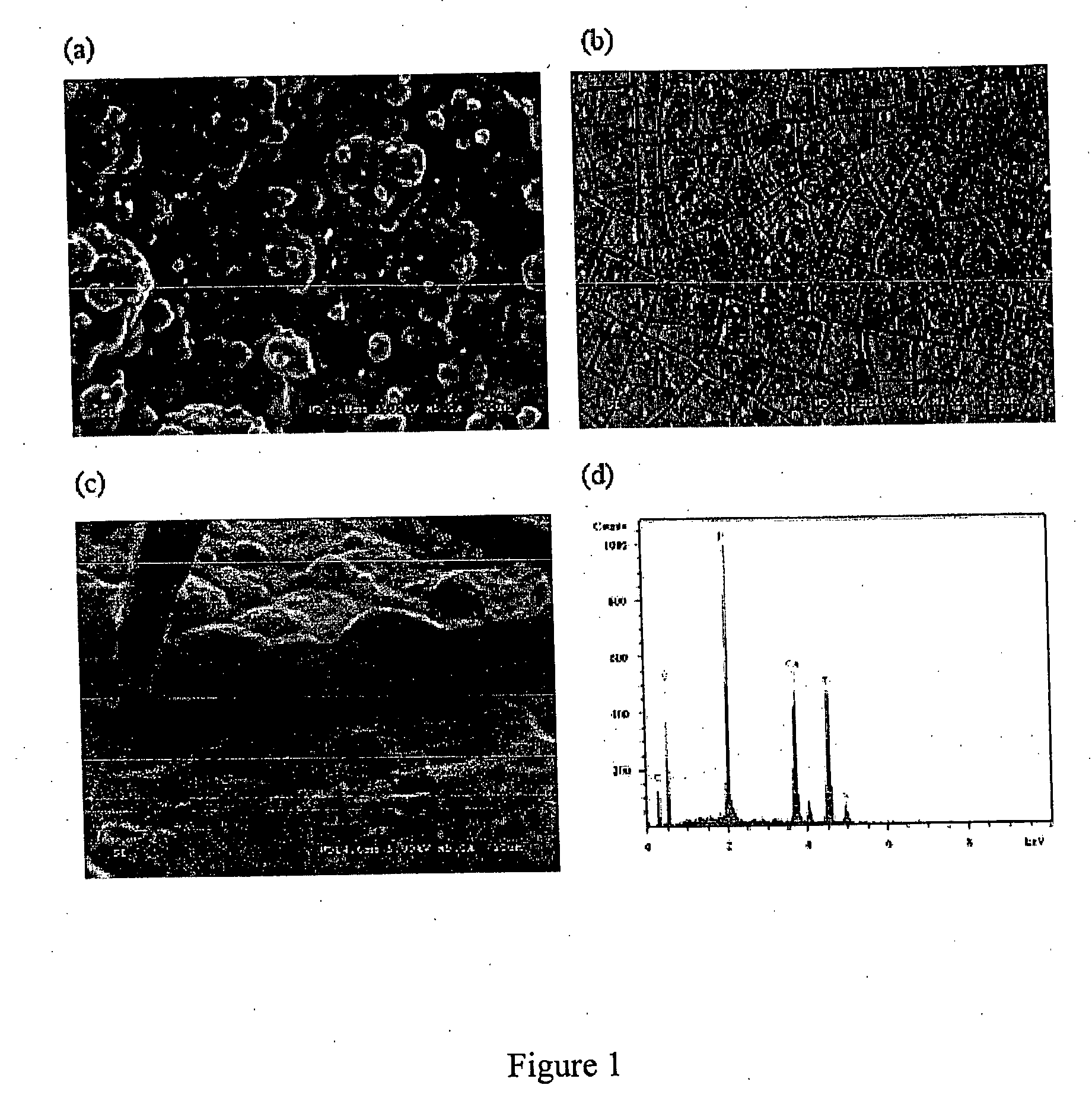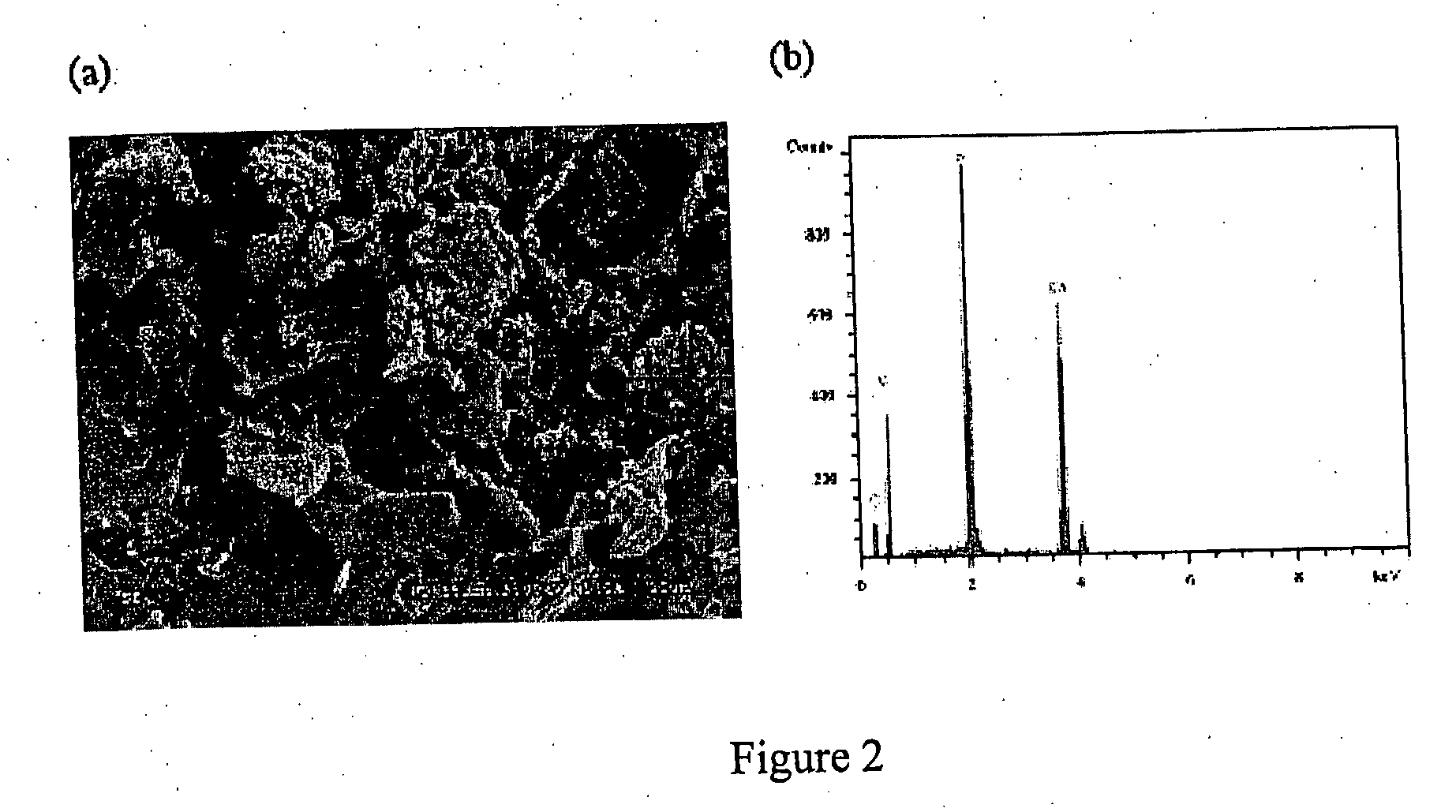Method of electrolytically depositing a pharmaceutical coating onto a conductive osteal implant
a technology of osteal implants and pharmaceutical coatings, which is applied in the direction of electrolytic organic material coatings, prosthesis, colloidal chemistry, etc., can solve the problems of high revision cost to the health care system, 20 percent of hip replacements failing within 20 years, and patients needing revision surgery
- Summary
- Abstract
- Description
- Claims
- Application Information
AI Technical Summary
Benefits of technology
Problems solved by technology
Method used
Image
Examples
example 1
Electrolytically Deposited Calcium Bisphosphonate on Titanium
1. Materials and Methods
a) Preparation of Electrolysis Cell
[0075] Commercially pure titanium plates (20×20×3 mm) were mechanically ground with sand paper (800 grit) and ultrasonically cleaned successively in acetone, ethanol and distilled water each for 5 minutes. The plates were etched in 1% HF acid for 5 minutes and ultrasonically cleaned again in distilled water and stored in distilled water for further use. An electrolyte solution was prepared using bisphosphonate. The bisphosphonate used in this example was etidronic acid (1-hydroxy-ethylidene-1,1-diphosphonate, Fluka, Switzerland). Their structures are shown below.
Etidronate was chosen because 1) it is being used in clinics (14); 2) studies on its calcium salts prepared in solution are available (34, 35), which makes comparisons possible; and 3) it is readily available.
b) Titration of Etidronate
[0076] Etidronic acid has a molecular weight of 206.03 (Fluka,...
example 2
Electrolytically Deposited Calcium Bisphosphonate on Porous Tantalum
1. Materials and Methods
a) Porous Tantalum Implants
[0099] 100 cylindrical porous tantalum plugs (3.15 mm in diameter and 5 mm long) were provided by Zimmer, Inc. They were sealed and sterilized with gamma rays before delivery. FIG. 5 shows optical and SEM images of the porous Ta implants at various magnifications. The porosity is estimated to be 80%.
b) Bisphosphonate and Other Materials
[0100] Alendronate (4-amino-1-hydroxybutylidene-1,1-bisphosphonate), one type of bisphosphonate, was chosen because of its high efficacy and popularity. Type I soluble collagen was used in this example. The inclusion of collagen in alendronate drug coating helps to improve mechanical integrity and bone ingrowth. Poly-(lactic-co-glycolic-acid) (PLGA, Commercial Name: Lactel, Lot #: D96056), was purchased from Birmingham Polymers, Birmingham, Ala. The lactic acid / glycolic acid ratio was 85:15.
c) Electrolytic Deposition of Coat...
PUM
| Property | Measurement | Unit |
|---|---|---|
| size | aaaaa | aaaaa |
| temperatures | aaaaa | aaaaa |
| pH | aaaaa | aaaaa |
Abstract
Description
Claims
Application Information
 Login to View More
Login to View More - R&D
- Intellectual Property
- Life Sciences
- Materials
- Tech Scout
- Unparalleled Data Quality
- Higher Quality Content
- 60% Fewer Hallucinations
Browse by: Latest US Patents, China's latest patents, Technical Efficacy Thesaurus, Application Domain, Technology Topic, Popular Technical Reports.
© 2025 PatSnap. All rights reserved.Legal|Privacy policy|Modern Slavery Act Transparency Statement|Sitemap|About US| Contact US: help@patsnap.com



